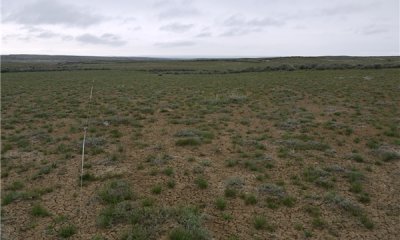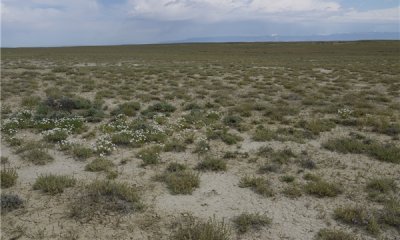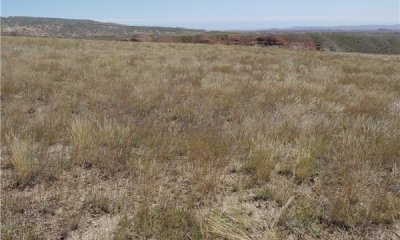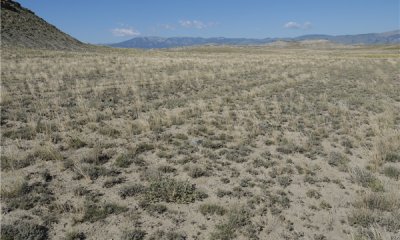
Saline Upland Loamy (SUL) Big Horn Basin Core
Scenario model
Current ecosystem state
Select a state
Management practices/drivers
Select a transition or restoration pathway
- Transition T1A More details
- Transition T1B More details
- Transition T1C More details
- Restoration pathway R2A More details
- Transition T2A More details
- Transition T2B More details
- Restoration pathway R3A More details
- Transition T3A More details
- Transition T3B More details
- Restoration pathway R4A More details
- Transition T5A More details
- Transition T5B More details
-
No transition or restoration pathway between the selected states has been described
Target ecosystem state
Select a state
State 1
Reference: Saltbush / Bunchgrasses



Description
Saline Upland is a dynamic and complex concept that crossed soil textural breaks and includes a wide range of soil chemistry, that work together to create a salt-tolerant community. Field sampling can not capture the full dynamic of the chemistry and the current lack of soil laboratory data prevents clear separation of specific characteristics. Composition and production for this State have been ranged to incorporate the full range of possibilities.
Soils within the 5-9" precipitation zone, fine-loamy particle size class, and with a wide range of alkali, saline, sodic and gypsum influences, are characterized by Gardner's Saltbush dominated plant communities. These communities may also have Bud Sagebrush, Birdfoot Sagebrush, Cottonthorn Horsebrush, and in some locations Greasewood that will comprise approximately 40% of the production (as a group) on the site. The grasses, composing 50% of the plant communities, are predominately Bottlebrush Squirreltail and Indian Ricegrass. As the sites transition, Sandberg Bluegrass and Blue Grama will begin to increase. Needleandthread is incidental in this State. The original Range Site description has rhizomatous wheatgrasses as a component, but data is minimal to support its presence within this LRU. The forb component is minor with only 10% of the production composed of by a select few forbs. A variety of biscuitroots/Desert Parsleys (Lomatiums), wild onion, milkvetches, and asters are found within this state.
The general ground cover for this state is open with bare ground consisting of 30 to 50%, but it is stable. The drought tolerance of this state allows for a wide flexibility in production and composition shifts from year to year, but maintains the base diversity for each community phase.
Submodel
State 2
Saltbush / Perennial Grasses



Description
The Saltbush/Perennial Grasses State (State 2) has been pressured into mid-stature bluegrasses and low-stature warm season grasses, reducing the flexibility of the community. Diversity has been reduced and although the state is stable with approximately 50% ground cover by Saltbush or salt tolerant shrubs, the production is slightly reduced.
Much of the Big Horn Basin has transitioned to this state, and persist with higher level of annual forbs than compared to the reference state communities (1.1 and 1.2). Current and historic data has documented a cyclic 8-10 year trend with extreme fluctuation in production of Sandberg Bluegrass and other species that has skewed production data. (Based on a 50 year data set).
Submodel
Description
A saltbush dominant site with bare ground is the second State captured within the original range site description for Saline Upland. As more soils data and vegetation data was analyzed, a trend shows many of the study locations with this community contained a higher percent clay. A few site classifications were on the border of the concept characteristics for Saline Upland, Clayey ecological site. These borderline sites currently classify/key to Saline Upland, Loamy. Management or Climatic conditions that caused this State may not be clear cut, and require continued investigation. It is recognized that with continued pressure and drought conditions, the productivity and sustainability of most perennial grasses will decrease leaving a shrub dominated state. In the absence of invasive species, this state can persist on the landscape.
Very long-term prescribed grazing and grazing land mechanical treatment (with seeding possibly) may be practices that can be used to bring this state near or similar to reference. Remnant populations of native perennial grasses will persist in pockets within the Gardner's Saltbush, but in some instances, seeding may be required to help re-establish herbaceous species to these sites. No research was located for large areas of re-vegetation, but minor success has occurred with seeding trials completed by local bentonite mining reclamation processes within the Big Horn Basin. These seeding trials were small isolated areas requiring extended periods of rest and will require long-term management to bring them back to a state that will resemble Reference (communities 1.1 and 1.2).
Submodel
State 4
Invaded



Description
The Saline Upland site has proven to be more tolerable or resistant to invasion by many of the invasive species threatening the rangelands today. However, there are a few species that still present issues as these lands are disturbed by development, continued drought, and shifts in use patterns. Many of these sites are under pressure by local threats such as False Wheatgrass and False Buffalograss, as well as the national threats of Halogeton, Cheatgrass (Downy Brome), and a variety of Knapweed and thistles. The persistence, resistance and resilience of specific communities within this state will be discussed further below.
Submodel
Description
Mining/energy development, borrow/gravel pits, farming/irrigation, and roads are only a few of the land uses that have had an impact on this site. Much of the land correlated as Saline Upland is deemed unfit or non-productive, and either no attempt was made to reclaim areas or reseeding attempts have failed. As this land recovers, is restored or reclaimed, or further disturbances occur, the site potential and stability is greatly affected. Historic attempts to improve productivity of these areas has altered the resilience and response to management/natural disturbance regimes. Specific references will be discussed below.
Submodel
Mechanism
Drought, Frequent or Severe Grazing – Extended periods of drought have the ability to weaken the resilience or push plant species to their maximum resilience level, forcing the community over the threshold into the next state. Drought with added stresses of frequent or severe grazing can expedite the process, or frequent and severe grazing can remove the key species leaving the site dominated by the less desirable herbaceous species. Any combination of these factors will reduce or remove the key bunchgrasses (Indian Ricegrass and Bottlebrush Squirreltail), and leave a Sandberg bluegrass or Blue grama dominated site.
Mechanism
Frequent and Severe Grazing, Severe Ground Disturbance, Drought - The combination of frequent and severe grazing and drought reduces the key bunchgrasses of this community. With no protection or defense, the forbs and grasses may become very sparse or may be removed from the community leaving a saltbush dominated location. Extended long periods of drought alone, or severe ground disturbance, will remove or inhibit the sustainability of this community, including Gardner's saltbush.
Mechanism
Frequent and Severe Grazing, No Use, Drought, Ground Disturbance with Seed Source – Halogeton, Cheatgrass (Downy Brome), and many of the invasive weeds that are present in the Big Horn Basin are drought tolerant and able to tolerate the least desirable soils and growing conditions. The barren, open canopy that is typical with Saline Upland is a prime target for these invaders. Given any level of disturbance, whether it is from heavy and frequent grazing use, drought or other ground disturbances, if there is a seed source present, these invaders will find a niche and establish themselves. The nature of these salt affected soils to become dispersed, especially in the absence of hoof action or traffic to compact the soils to some degree, allows for a loose and inviting seedbed. An open seedbed and a seed source for any variety of invasive species quickly transitions the reference community into an invaded state.
Restoration pathway R2A


Mechanism
Long-term Prescribed Grazing – Trials completed successfully on BLM lands in the 1960s have shown the ability to manipulate salt-influenced sod communities. Given time and favorable conditions, Indian ricegrass and Bottlebrush squirreltail were seen to re-establish themselves, when seed sources were within the area. These factors provide the ability for the Saltbush/Perennial Grasses state to transition back to the Saltbush/Bunchgrass state (Reference). This transition may take a substantial amount of time, but it is able to recover with only minor inputs and increased management.
Relevant conservation practices
| Practice | External resources |
|---|---|
|
Integrated Pest Management (IPM) |
|
|
Prescribed Grazing |
|
|
Grazing Management Plan - Applied |
Mechanism
Frequent and Severe Grazing, Severe Ground Disturbance, Drought – Further stress opens the transition from the Saltbush/Perennial grasses to a Saltbush/Bare Ground dominated community (State 3). Reduced function of the perennial herbaceous species and decreased diversity weakens the resilience to changing conditions within the community. As grazing intensity remains high, drought is extensive, or if a source of ground disturbance occurs, the native perennial grasses cannot maintain a foothold in the community forcing the community across the threshold to a Saltbush/Bare Ground state.
Mechanism
No Use, Ground Disturbance (with presence of seed source), Drought, Frequent or Severe Grazing – The vulnerability of transitioning from the Saltbush/Perennial Grasses state to an invaded state is increased as the canopy is opened with further disturbance, drought or grazing use. No use of a community opens the possibility of the soils becoming loose (fluffy), open to seedling establishment, but highly erosive.
Mechanism
Prescribed Grazing (Long-term), Grazing Land Mechanical Treatment (possibly with seeding) – As referenced above, seeding success is minimal within the conditions of the Big Horn Basin as well as the limitations of salt-affected soils. With prescribed grazing and remnant seed sources available, this State has the potential to recover; however, the time required may not be feasible. Native seed mixtures that have been proven to tolerate saline, sodic, or saline/sodic soils are not necessarily the key species for the Reference communities. These locations have the potential to maintain perennial herbaceous vegetation and to function in State 2 – Saltbush and Perennial Grasses. Poa Secunda (Sandberg/Big bluegrass) and Western wheatgrass are a few of the species that may be a viable selection for seeding back to these locations. If a site is seeded (drilled or broadcast seeding), the response to management and climatic conditions may be altered.
Relevant conservation practices
| Practice | External resources |
|---|---|
|
Critical Area Planting |
|
|
Grazing Land Mechanical Treatment |
|
|
Range Planting |
|
|
Heavy Use Area Protection |
|
|
Integrated Pest Management (IPM) |
|
|
Prescribed Grazing |
|
|
Grazing Management Plan - Applied |
Mechanism
No Use, Ground Disturbance (with seed source present), Drought, Frequent or Severe Grazing – Once a community has transitioned to a saltbush dominated community, productivity and functionality of the site are at risk. If further disturbance (livestock/wildlife, human or environmental disturbance) saltbush will begin to decrease and annuals and other less desirable species will begin to dominate. Hydrologic function will decrease and erosional hazard will increase as a community is transitioned into an invaded state.
Mechanism
Grazing Land Mechanical Treatment or Rangeland Seeding with Prescribed Grazing - The large scale success of contour furrowing on the rangelands with a mixture of crested wheatgrass and other introduced/cultivated species has shown that this landscape can be restored to a functional state using improved varieties and selective grazing land mechanical treatments. Once established the site will need to be managed for the species selected to ensure proper use of the resource. Once the site is disturbed there is a risk of erosion until establishment of the seedlings can occur. Management of undesired species (noxious or invasive weed species) is an integral component of the reclamation process to ensure the community is restored to an acceptable condition.
Mechanism
Integrated Pest Management, Grazing Land Mechanical Treatment, or Rangeland Seeding with Prescribed Grazing – Once invasive species such as Cheatgrass, Halogeton, or knapweeds are established, eradication is not a feasible option and restoration to a prior State is not possible. An invaded site, however, can be restored to a functional plant community through intensive or integrated pest management. Grazing land mechanical treatments to reduce existing populations and to introduce forage species that are desirable and able to compete with the invasive species will restore grazing. When a community has been significantly invaded, losing all of the key grazing species, re-seeding the site to a competitive species may be the only option. Establishment will be slow and the variety of available seed sources for salty soil conditions is minimal but, small scale projects have been achieved with marginal success.
Relevant conservation practices
| Practice | External resources |
|---|---|
|
Critical Area Planting |
|
|
Grazing Land Mechanical Treatment |
|
|
Range Planting |
|
|
Heavy Use Area Protection |
|
|
Integrated Pest Management (IPM) |
|
|
Upland Wildlife Habitat Management |
|
|
Early Successional Habitat Development/Management |
|
|
Livestock Use Area Protection |
|
|
Native Plant Community Restoration and Management |
|
|
Prescribed Grazing |
|
|
Invasive Plant Species Control |
|
|
Agrichemical Handling Facility |
|
|
Grazing Management Plan - Applied |
Mechanism
No Use, Drought, Disturbance, or Frequent and Severe Use – Following or with continued disturbance the perennial grasses will be slow to recover or may not be able to recover, leaving a saltbush dominated community. Density or frequency of saltbush will be reduced. Drought or frequent and severe use can also work to remove the herbaceous component from a disturbed/reclaimed community. No use, and the tendency for these soils to become loose will reduce the ability for many plants to persist, removing most herbaceous species. Saltbush will maintain a community in these soils, but may become less productive.
Mechanism
No Use, Disturbance, Severe and Frequent Grazing, Drought with a seed Source Present – Loose soils as a result of non-use or the decrease in key species due to severe and frequent grazing, drought or disturbance opens the canopy and provides opportunity for invasive species to establish. Continued pressure, added disturbances, or introduction of undesirable species will weaken and trigger a shift from the degraded state to an Invaded state.
Model keys
Briefcase
Add ecological sites and Major Land Resource Areas to your briefcase by clicking on the briefcase (![]() ) icon wherever it occurs. Drag and drop items to reorder. Cookies are used to store briefcase items between browsing sessions. Because of this, the number of items that can be added to your briefcase is limited, and briefcase items added on one device and browser cannot be accessed from another device or browser. Users who do not wish to place cookies on their devices should not use the briefcase tool. Briefcase cookies serve no other purpose than described here and are deleted whenever browsing history is cleared.
) icon wherever it occurs. Drag and drop items to reorder. Cookies are used to store briefcase items between browsing sessions. Because of this, the number of items that can be added to your briefcase is limited, and briefcase items added on one device and browser cannot be accessed from another device or browser. Users who do not wish to place cookies on their devices should not use the briefcase tool. Briefcase cookies serve no other purpose than described here and are deleted whenever browsing history is cleared.
Ecological sites
Major Land Resource Areas
The Ecosystem Dynamics Interpretive Tool is an information system framework developed by the USDA-ARS Jornada Experimental Range, USDA Natural Resources Conservation Service, and New Mexico State University.




